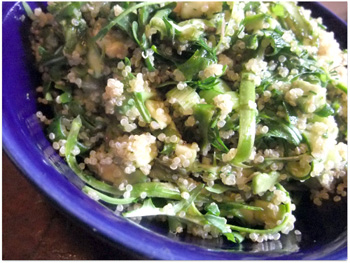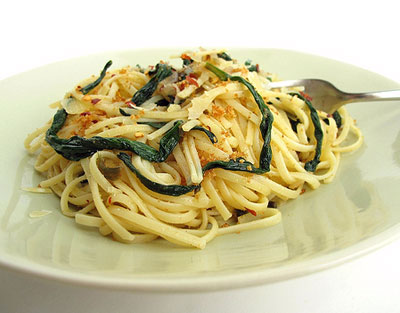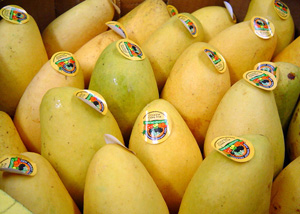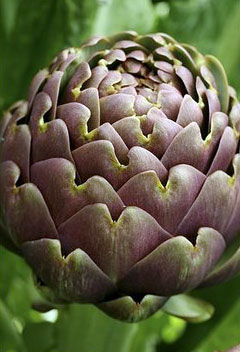 Ah, Spring! We are enjoying a warm spell right now and the fresh produce reflects the change of seasons with earthy root vegetables giving way to tender bright greens. I am so happy to have sunshine and bright green asparagus to eat!
Ah, Spring! We are enjoying a warm spell right now and the fresh produce reflects the change of seasons with earthy root vegetables giving way to tender bright greens. I am so happy to have sunshine and bright green asparagus to eat!
I recently discovered how delicious asparagus is when served raw, in salads. The trick is to shave it thinly with the sharpest vegetable peeler you have, then dress it with oil, lemon and salt so it wilts, just slightly. Asparagus is like the poster child for Spring.
I had eaten quinoa, but never tried cooking it until just recently when I received some samples of it--red, white and black--from Roland Food. Reading about quinoa I discovered while it has the texture of grain, it's actually a fruit. It's also gluten-free. It is very bitter unless thoroughly soaked and rinsed. Fortunately quinoa from Roland Food is already soaked saving me the bother.

 It's that time of the year: ramp season! These wild leeks, as they are known, are starting to become available at the farmers' markets. Just last Friday on my visit to the the Union Square Greenmarket, Berried Treasures was selling bags upon bags full of ramps. I'm sure they were all bought up by restaurants that day. But I myself bought a few bunches as I usually do and immediately started thinking of all the recipe possibilities.
It's that time of the year: ramp season! These wild leeks, as they are known, are starting to become available at the farmers' markets. Just last Friday on my visit to the the Union Square Greenmarket, Berried Treasures was selling bags upon bags full of ramps. I'm sure they were all bought up by restaurants that day. But I myself bought a few bunches as I usually do and immediately started thinking of all the recipe possibilities. There are two things in my world that tell me spring is officially here. One, the call of the loons wake me from my morning slumber as they float on the river just outside my window. That just happened Wednesday morning. Two, the small juicy yellow-skinned mangoes are ready to purchase by the case at my favorite little Asian market in Fargo. Done. Spring is here.
There are two things in my world that tell me spring is officially here. One, the call of the loons wake me from my morning slumber as they float on the river just outside my window. That just happened Wednesday morning. Two, the small juicy yellow-skinned mangoes are ready to purchase by the case at my favorite little Asian market in Fargo. Done. Spring is here. Like some twelve-year-old boy waiting for baseball’s opening game each spring, I count the days until my sweet Georgia Vidalia County onions arrive. There is nothing so sweet or crunchy as a Vidalia onion. One can eat a fresh spring Vidalia onion as if it were an apple!
Like some twelve-year-old boy waiting for baseball’s opening game each spring, I count the days until my sweet Georgia Vidalia County onions arrive. There is nothing so sweet or crunchy as a Vidalia onion. One can eat a fresh spring Vidalia onion as if it were an apple! My first foray into a closer relationship with artichokes began as a work assignment. Drive to Lompoc, California, chat with a farmer, get some pictures and get back to Los Angeles without becoming a part of the daily human-and-metal gridlock. Coffee in hand, I raced up the 5, beating traffic and made it with a few minutes to spare.
My first foray into a closer relationship with artichokes began as a work assignment. Drive to Lompoc, California, chat with a farmer, get some pictures and get back to Los Angeles without becoming a part of the daily human-and-metal gridlock. Coffee in hand, I raced up the 5, beating traffic and made it with a few minutes to spare.